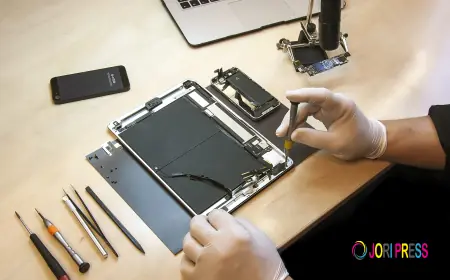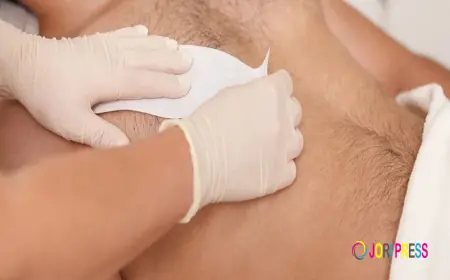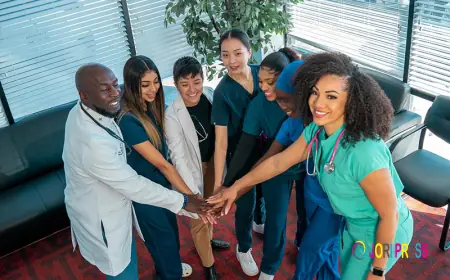How Technology is Transforming Medical Services
In the last decade, technology has drastically reshaped many aspects of our daily lives, from communication to education. Among the most profound transformations, however, is the way medical services are delivered. What once required in-person visits, long waiting times, and cumbersome paperwork can now be managed efficiently with digital solutions. The integration of technology in healthcare has created a revolution, making medical services faster, more accurate, and more accessible to a broader population.
The Shift from Traditional Healthcare to Digital Solutions
Traditionally, healthcare relied heavily on face-to-face interactions, hospital visits, and manual record-keeping. Patients often had to travel long distances, wait in crowded clinics, and undergo repetitive diagnostic procedures. These inefficiencies not only consumed time but also limited the accessibility of quality healthcare, especially in remote or underserved areas.
With technological advancements, the healthcare sector is increasingly embracing digital solutions. Electronic Health Records (EHRs), telemedicine, wearable devices, and mobile health applications are now fundamental tools in modern healthcare. These innovations not only streamline administrative tasks but also improve patient engagement and medical outcomes.
Telemedicine: Healthcare at Your Fingertips
One of the most notable changes in the medical field is the rise of telemedicine. Telemedicine allows patients to consult with healthcare professionals via video calls, phone calls, or chat applications. This is particularly beneficial for individuals who live in remote areas, have mobility issues, or simply prefer the convenience of remote consultations.
Telemedicine is also instrumental during public health crises, as it minimizes exposure to contagious diseases while ensuring continuous medical care. Many clinics and hospitals now offer virtual consultations for common ailments, chronic disease management, and follow-up appointments, drastically reducing the need for physical visits.
Wearable Technology and Health Monitoring
Wearable technology, such as smartwatches and fitness trackers, has transformed how individuals monitor their health. These devices track vital signs, physical activity, sleep patterns, and even heart rhythms. The data collected is valuable for both personal health awareness and clinical decision-making.
For patients with chronic conditions like diabetes or hypertension, wearables provide real-time monitoring that can alert both the patient and healthcare provider to potential health issues. This proactive approach enables timely interventions, reducing the risk of complications and hospitalizations.
Artificial Intelligence in Diagnosis and Treatment
Artificial Intelligence (AI) is another technological advancement significantly impacting medical services. AI algorithms can analyze vast amounts of medical data, from imaging scans to genetic information, with remarkable accuracy. In radiology, AI can detect anomalies in X-rays, MRIs, and CT scans faster than the human eye, aiding in early diagnosis and treatment.
Beyond diagnostics, AI also contributes to personalized treatment plans. By analyzing patient data, AI systems can predict potential health risks, recommend preventive measures, and optimize medication dosages. This not only enhances the precision of care but also reduces the likelihood of human error in medical decision-making.
Mobile Health Apps: Personalized Care in the Palm of Your Hand
Mobile health applications have become a crucial part of modern healthcare. These apps offer a variety of services, including appointment scheduling, medication reminders, symptom tracking, and mental health support. Patients can now manage their health more actively, taking control of their well-being with guidance from healthcare professionals at every step.
Some apps are designed to provide virtual consultations, monitor vital signs remotely, and offer educational resources about lifestyle changes and disease management. By leveraging the capabilities of mobile technology, healthcare providers can maintain continuous communication with patients, improving adherence to treatment and overall health outcomes.
Home-Based Diagnostic Services: A Growing Trend
Another significant advancement in healthcare technology is the rise of home-based diagnostic services. Patients no longer need to wait in long queues at clinics for routine tests. Today, services are available that allow individuals to book laboratory tests and medical checkups from the comfort of their home. For instance, one can now schedule a full body checkup at home, where trained professionals visit the patient’s residence to collect samples and conduct tests, ensuring safety, convenience, and timely results.
Home-based services not only improve patient comfort but also expand access to preventive healthcare. By bringing diagnostic capabilities directly to patients, medical providers can identify potential health issues earlier and recommend interventions before complications arise. This approach is particularly valuable for elderly patients, individuals with limited mobility, and busy professionals who find it difficult to visit clinics regularly.
Robotics and Automation in Surgery
Robotics and automation have also made their mark in medical services, especially in surgical procedures. Robotic-assisted surgeries enable higher precision, smaller incisions, reduced blood loss, and quicker recovery times. Surgeons can perform complex procedures with enhanced accuracy, which minimizes risks and improves patient outcomes.
Automation extends beyond surgery to pharmacy management, lab testing, and hospital logistics. Automated systems streamline workflows, reduce human error, and free healthcare professionals to focus more on patient care rather than administrative tasks.
Data-Driven Healthcare and Predictive Analytics
Healthcare is increasingly becoming data-driven. Predictive analytics uses historical and real-time data to forecast health trends, identify potential outbreaks, and enhance clinical decision-making. Hospitals and clinics utilize data analytics to allocate resources efficiently, reduce patient wait times, and improve treatment outcomes.
Moreover, predictive models can identify individuals at higher risk of developing certain conditions, allowing healthcare providers to recommend preventive measures tailored to each patient. This proactive approach transforms healthcare from reactive treatment to preventive care, ultimately reducing the burden of disease on society.
The Role of Virtual Reality in Rehabilitation and Training
Virtual Reality (VR) technology is emerging as a valuable tool in both medical training and patient rehabilitation. Medical students and surgeons can practice complex procedures in a simulated environment, gaining experience without risking patient safety. VR is also used in physical therapy and rehabilitation programs, where patients engage in interactive exercises that accelerate recovery while keeping them motivated.
This immersive technology enhances both learning and patient outcomes, demonstrating the broad potential of technology in transforming healthcare beyond conventional applications.
Challenges and the Road Ahead
Despite these advancements, integrating technology into medical services comes with challenges. Issues such as data privacy, cybersecurity, the digital divide, and regulatory compliance must be addressed to ensure safe and equitable access to healthcare. Additionally, while technology enhances healthcare delivery, human interaction and empathy remain irreplaceable components of medical care.
Looking ahead, the continued collaboration between technology experts and healthcare professionals promises to further revolutionize medical services. Innovations like AI-driven diagnostics, wearable health monitors, and home-based care solutions will continue to make healthcare more personalized, efficient, and accessible.
Conclusion
Technology has undeniably transformed medical services, creating a more connected, data-driven, and patient-focused healthcare ecosystem. From telemedicine and wearable devices to AI, robotics, and home-based diagnostic services, the opportunities to improve patient care are immense. Services like a full body checkup at home illustrate how technology has made preventive healthcare more convenient and accessible, allowing individuals to monitor and manage their health without the traditional barriers of time, travel, or location.
As technology continues to evolve, the potential for a more proactive, efficient, and patient-centered healthcare system grows. By embracing these innovations, both healthcare providers and patients can work together to ensure better health outcomes, improved quality of life, and a future where medical care is truly seamless and universally accessible.
What's Your Reaction?
 Like
0
Like
0
 Dislike
0
Dislike
0
 Love
0
Love
0
 Funny
0
Funny
0
 Angry
0
Angry
0
 Sad
0
Sad
0
 Wow
0
Wow
0




















































